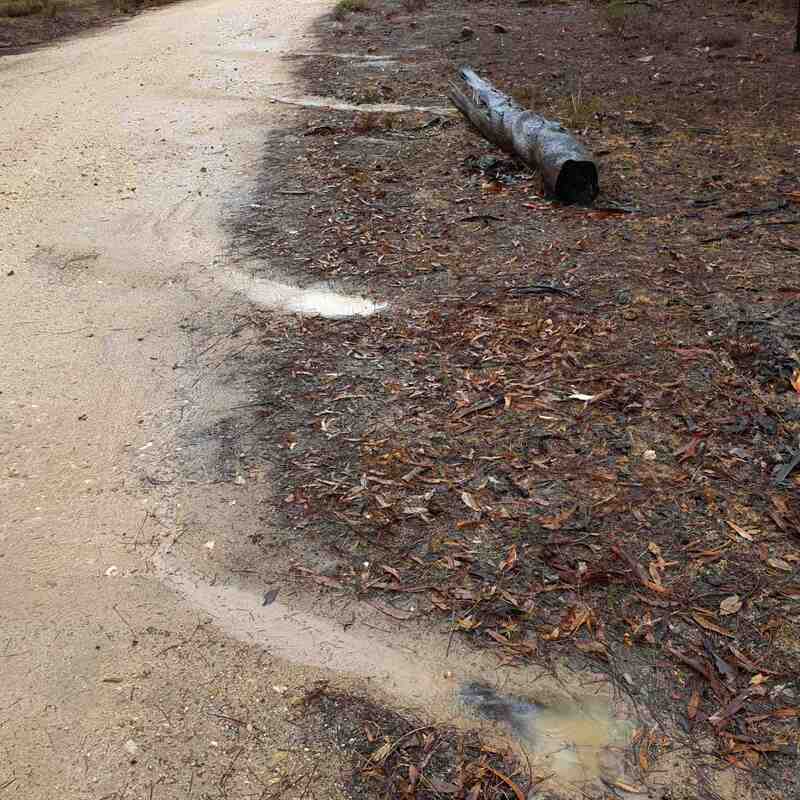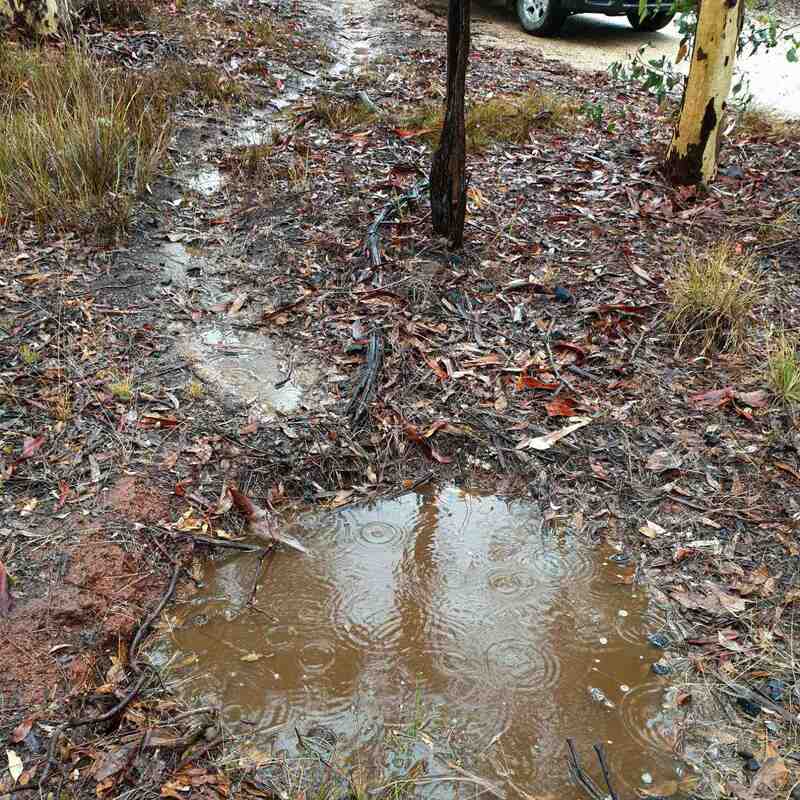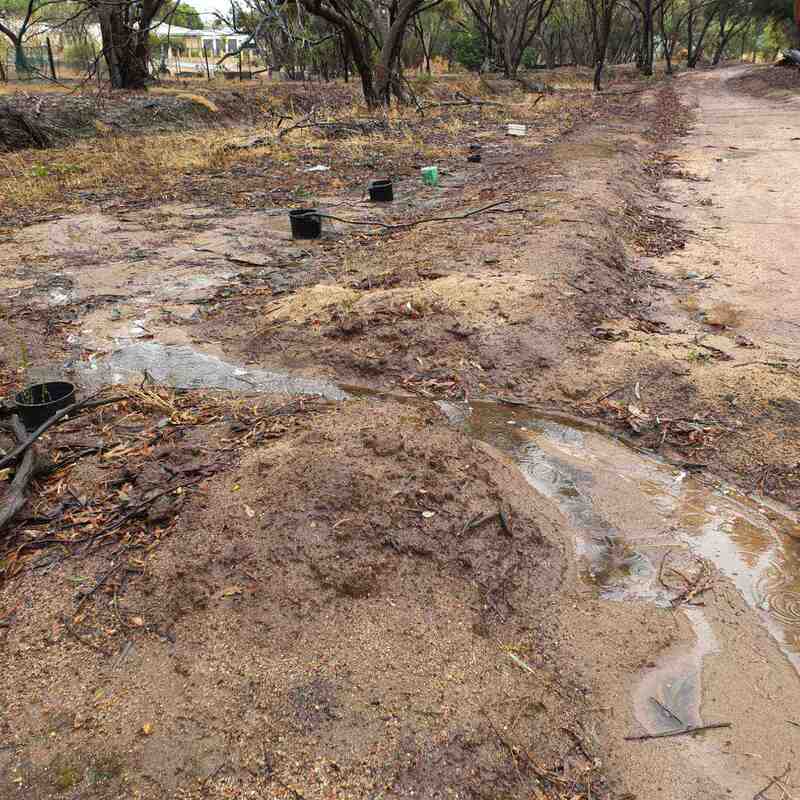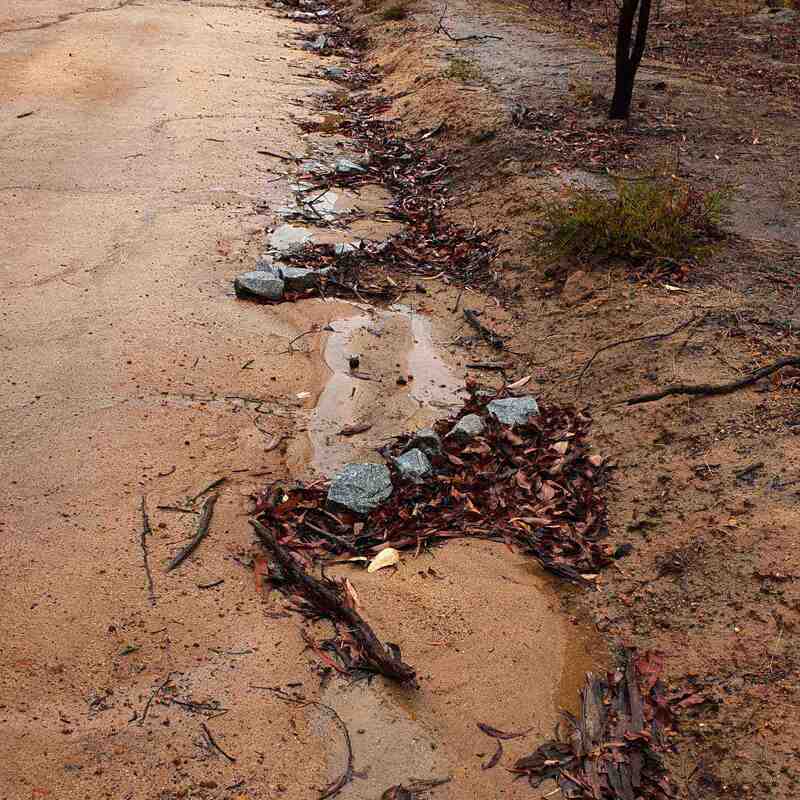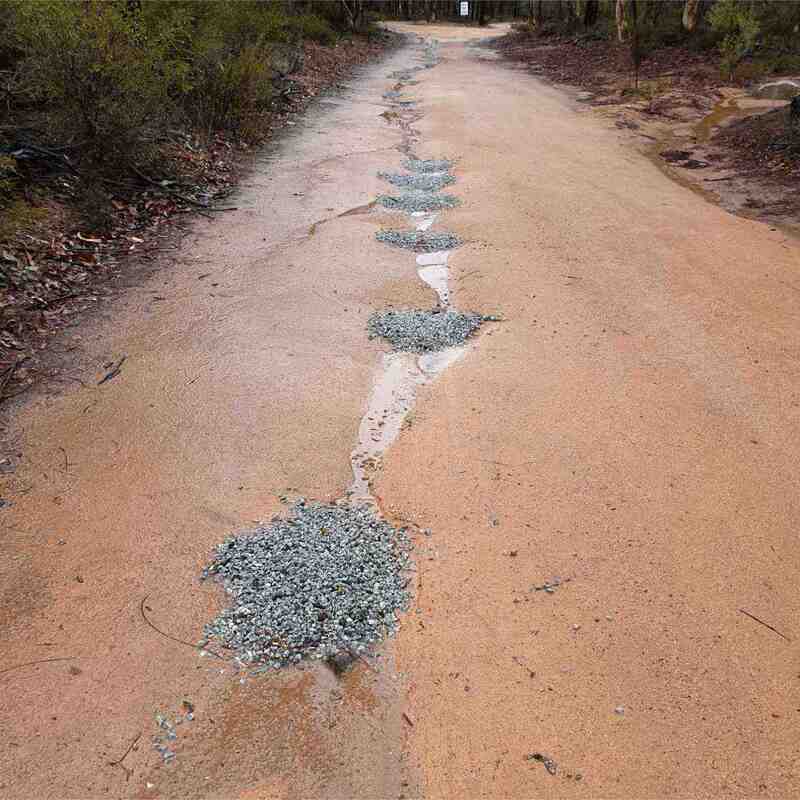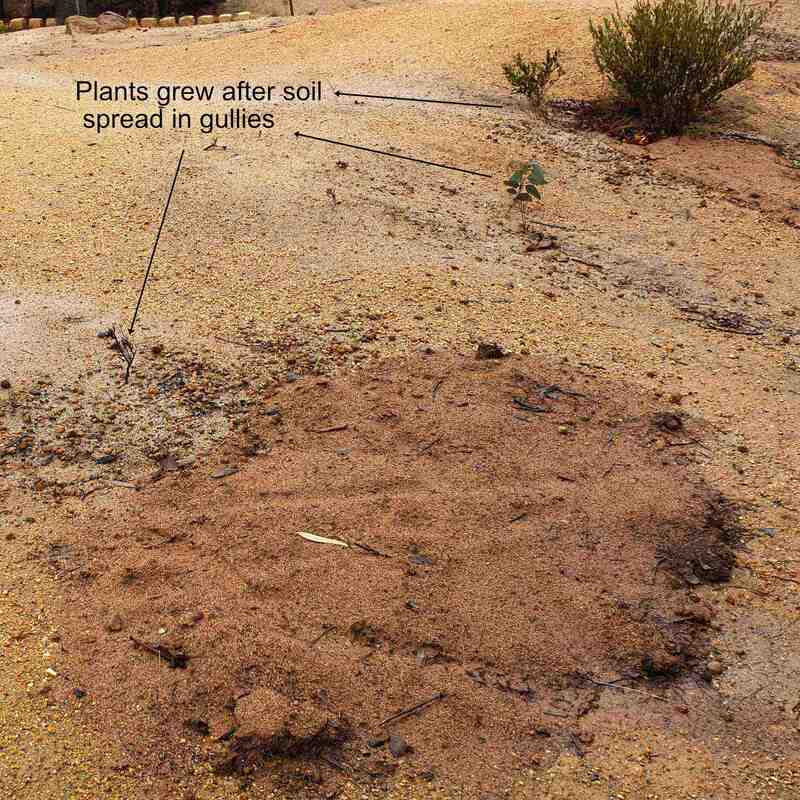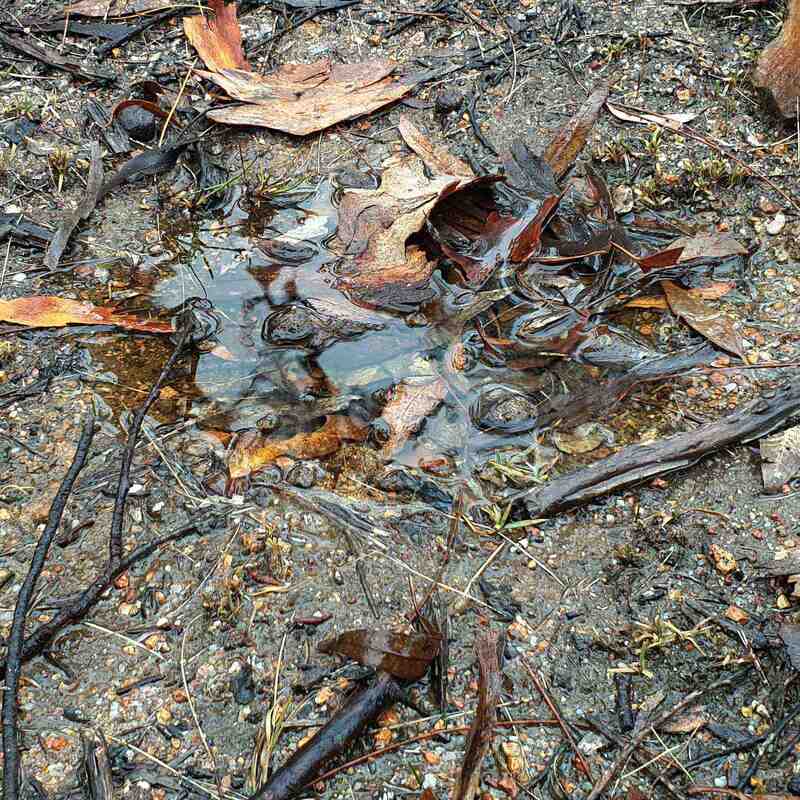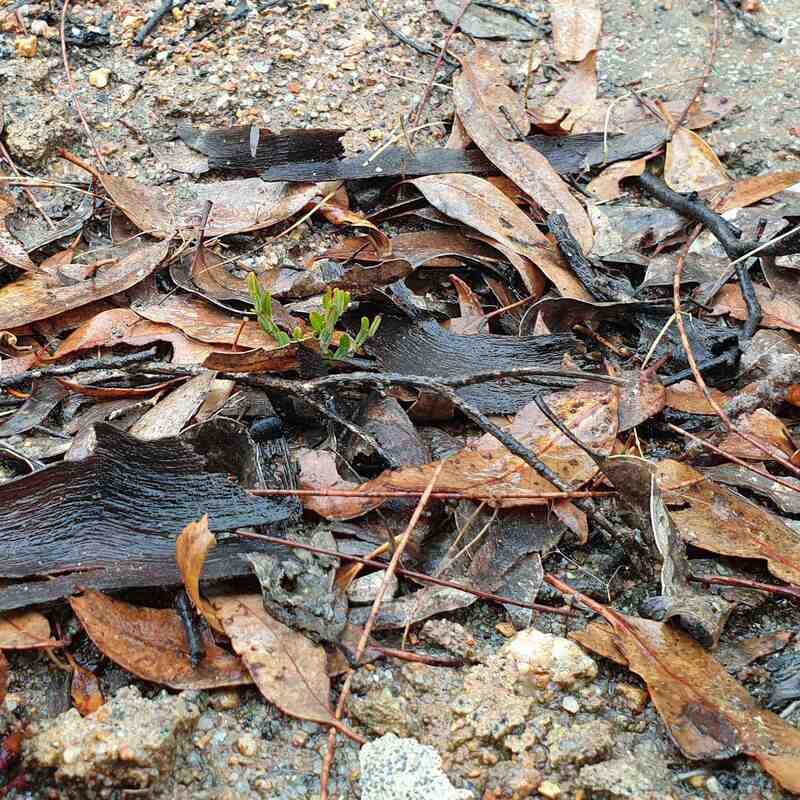As in most small reserves, wildlife and plants in Foxes Lair have suffered greatly from European settlement. This blog showed that most of our soils are very water repellent but many native plants had exploited it to direct water to their roots. However water repellence greatly reduces seed germination. For regeneration, plants relied on periodic fires to reduce surface repellence, and the wealth of native burrowing animals such as bilbies, quendas and woylies to trap surface water. Early accounts mention that some areas of bush resembled ploughed paddocks. Alas most native animals have gone and water runs away.
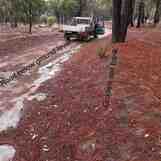 Below ground roads become waterways
Below ground roads become waterways More sensitive road maintenance, burrowing animals and periodic burns are required. Feral pigs and rabbit cause great soil disturbance, but at great cost to agriculture and the environment.
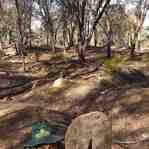
Can you spot him?
Frequent road drains reduce road erosion and return water to slopes
Corrugations are best prevented by reducing traffic speed.
Potholes tend to form on flat road sections. Without a compactor clay, sand or gravel fill is splashed out by tyres in wet weather. Experience has has shown that angular blue metal is the best material for drainage while staying in place.
Sand which accumulates in road side spur drains is not water repellent and often contain seeds. Seedling readily establish there, and the sand fast-racks seedling establishment when spread on bare areas.
